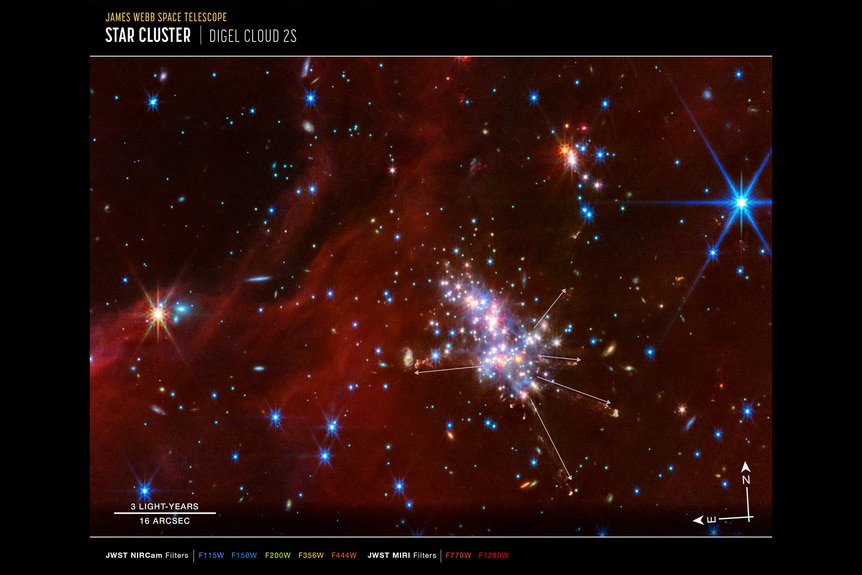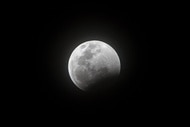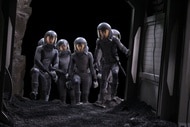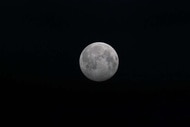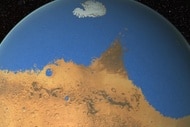Create a free profile to get unlimited access to exclusive videos, sweepstakes, and more!
Baby Stars Growing at the Edge of the Galaxy - Here's What They Look Like
Astronomers can now see distant regions 10 times more clearly.
We sometimes think of the Earth as being a small planet around a mid-sized star on the outskirts of the galaxy. In reality, we’re sort of in the galactic suburbs, far from the bustling Big City of the Galactic Center, but equally far from the truly remote outer regions. Recently, astronomers pointed JWST at a region known as the Extreme Outer Galaxy (EOG) – a region Farscape’s John Crichton might know as the Uncharted Territories – to investigate how stars form way out in the galactic sticks.
Astronomers used JWST’s NIRCam (Near-Infrared Camera) and MIRI (Mid-Infrared Instrument) to peer at a region 58,000 light-years away from the Galactic Center. For comparison, the Sun is about 26,000 light-years from the center, putting this region at more than twice the distance. They were scoping out two molecular clouds known as Digel Clouds 1 and 2, where unusual stars are in the process of forming.
JWST’s incredible sensitivity, when compared with other instruments, allowed astronomers to map the region in record-breaking detail, charting its protostars, outflowing jets of radiation, and nebulae, not to mention a smattering of background galaxies. The details of humanity’s most recent venture into the EOG were published in the Astronomical Journal.
JWST Studies Star Formation at the Galaxy’s Edge
“In the past, we knew about these star forming regions but were not able to delve into their properties. The Webb data builds upon what we have incrementally gathered over the years from prior observations with different telescopes and observatories. We can get very powerful and impressive images of these clouds with Webb. In the case of Digel Cloud 2, I did not expect to see such active star formation and spectacular jets," said the study's lead author Natsuko Izumo, in a statement.
The sensitivity of JWST was at least 10 times better than previous observations, allowing astronomers (and all of us) to see individual stars inside Digel Cloud 2, for the first time. In fact, these observations allow astronomers to study star formation in the EOG at the same level of detail as nearby stars. That’s of particular interest because these regions are poor in elements heavier than helium, a quality which astronomers refer to as “metal-poor.” Their composition makes them similar to stars formed during the Milky Way’s distant past, providing a window into our galactic history.
Using MIRI and NIRCam, JWST captured images of Digel Cloud 2 through a number of filters. Each filter selects for a particular frequency of light and, during processing, each of those filters is assigned a color in the visible spectrum. The process translates the invisible near-infrared and mid-infrared light from Digel Cloud 2 into something we can see.
The image portrays a main cluster of young stars actively emitting high-energy jets of radiation along their poles. These stars are not all aligned, so the jets shoot off every which way. These stars are only in the very beginning of their life cycle and there’s still a lot to learn about how they evolve over time. Astronomers plan to continue observing this region, and others like it, tracing the evolution of stars, of our entire galaxy, from glorious beginning to bitter end.
Explore the Uncharted Territories yourself on Farscape, streaming now on Peacock.




